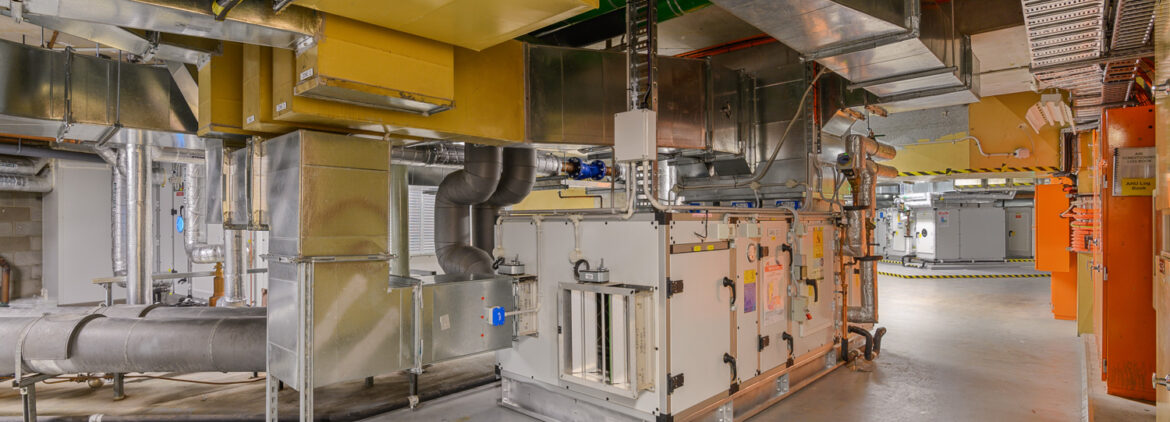Air Handling Units (AHUs) play a crucial role in maintaining a building’s indoor climate and air quality. These systems are responsible for filtering, heating, cooling, and circulating air throughout a building. However, over time, AHUs can experience wear and tear, leading to reduced efficiency and compromised indoor air quality. This is where AHU health audits and air balancing come into play. In this article, we explore the importance of these processes in maintaining efficient HVAC systems and ensuring a healthy indoor environment.
1. What is an AHU Health Audit? An AHU health audit is a comprehensive assessment of an Air Handling Unit’s performance and condition. The audit examines various components of the AHU, including fans, coils, filters, dampers, and ductwork, to identify any issues or areas for improvement. The goal is to ensure that the AHU is functioning efficiently and effectively, providing adequate ventilation, filtration, and temperature control.
2. The Importance of AHU Health Audits AHU health audits are essential for several reasons:
- Ensuring Optimal Performance: An AHU that is not operating at peak efficiency can lead to increased energy consumption, uneven air distribution, and poor indoor air quality. A health audit helps identify and address these issues, ensuring optimal performance.
- Improving Indoor Air Quality: Dirty filters, clogged coils, and malfunctioning dampers can negatively impact indoor air quality. An AHU health audit helps detect these problems and recommends necessary maintenance to improve air quality.
- Extending Equipment Lifespan: Regular audits can identify early signs of wear and tear, allowing for timely repairs or replacements. This can extend the lifespan of the AHU and reduce the need for costly emergency repairs.
- Compliance with Regulations: Many building codes and regulations require proper maintenance of HVAC systems to ensure a safe and healthy indoor environment. AHU health audits help ensure compliance with these regulations.
3. Key Components of an AHU Health Audit An AHU health audit typically involves the following key components:
- Inspection of Filters: Filters play a critical role in capturing dust, allergens, and other airborne particles. The audit checks for clogged or dirty filters and recommends replacements as needed.
- Examination of Coils: The audit assesses the condition of heating and cooling coils, looking for signs of corrosion or buildup. Clean coils are essential for efficient heat exchange and energy efficiency.
- Checking Dampers and Actuators: Dampers control the flow of air within the AHU. The audit ensures that dampers are functioning correctly and that actuators respond appropriately to control signals.
- Assessment of Fans and Motors: The audit examines fans and motors to ensure they are operating efficiently without excessive vibration or noise.
- Evaluation of Ductwork: Ductwork should be free of leaks and obstructions to maintain proper air distribution. The audit identifies any issues with ductwork and recommends corrective actions.
4. Understanding Air Balancing Air balancing is the process of adjusting airflow within a building to ensure even distribution and optimal ventilation. It involves measuring airflow at various points in the HVAC system and making adjustments to dampers, fans, and other components to achieve balance. Proper air balancing is essential for maintaining consistent indoor temperatures and air quality.
5. The Importance of Air Balancing Air balancing is critical for several reasons:
- Ensuring Consistent Comfort: Proper air balancing ensures that all areas of a building receive the right amount of airflow, maintaining consistent temperatures and comfort levels.
- Reducing Energy Consumption: An imbalanced HVAC system can lead to uneven heating or cooling, causing the system to work harder to compensate. Proper air balancing reduces energy consumption and operating costs.
- Improving Indoor Air Quality: Even air distribution helps maintain adequate ventilation and reduces the risk of stagnant air or uneven humidity levels.
AHU health audits and air balancing are essential processes for maintaining efficient HVAC systems and ensuring a healthy indoor environment. By conducting regular health audits, building owners can identify and address issues before they escalate, extending the lifespan of the AHU and reducing energy costs. Proper air balancing ensures consistent comfort and improved indoor air quality, contributing to a safer and more enjoyable indoor space. Investing in these processes is a proactive step towards achieving optimal HVAC performance and a healthier building environment.

